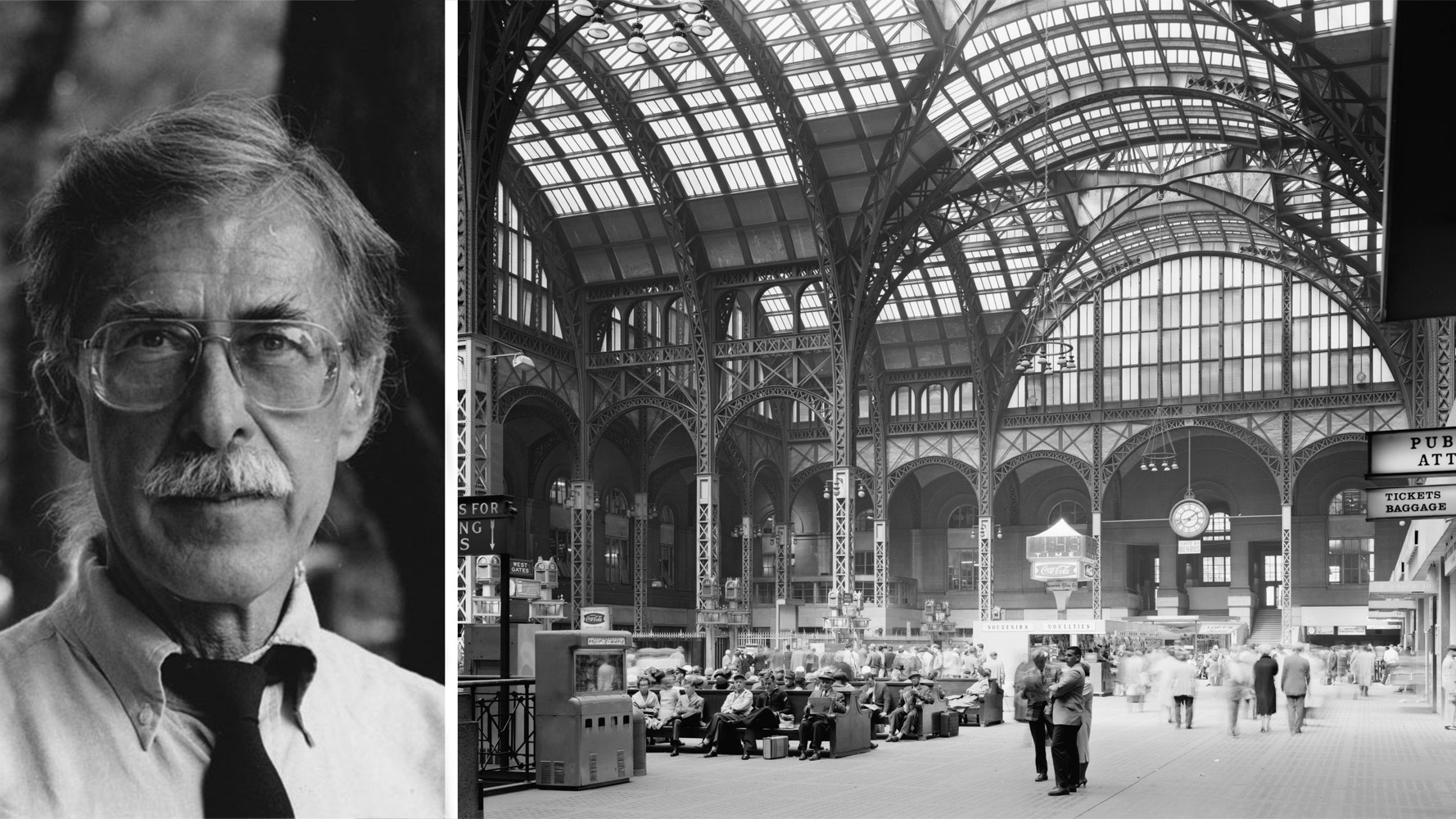An Eye Toward the Past: Remembering Architectural Photographer Cervin Robinson (1928–2022)

Cervin Robinson, an architectural photographer known for his commanding, monochromatic images of early-20th-century architecture, has died at age 94. “The pervasive use of color film in the late 1970s,” he lamented, “solved no problems that architectural photographers had been interested in, such as how to include people in pictures; it only distracted them from those questions and presented them with new and, as it happened, less interesting ones, such as how to reconcile fluorescent light sources with incandescent ones.” To Robinson, black and white was better suited to capturing raw architectural form.
Born in Boston in 1928, Robinson always had a knack for photography, architecture, and writing—three disciplines that defined his career. He began taking photographs at age 12, was the son of an architect, and studied English literature at Harvard University. After serving in the U.S. Army, Robinson worked in New York from 1953 to 1957 as an assistant to photographer and photojournalist Walker Evans, well known for his Great Depression–era portraiture of rural America for the Farm Security Administration. But it was in Evans’s articulate imagery of vernacular architecture and roadside Americana that Robinson found refuge.
In 1958, he began turning his own camera’s lens toward architecture’s largely unphotographed past for the Historic American Buildings Survey. The collection, part of the Library of Congress and today comprising more than 581,000 measured drawings, large-format photographs, and written histories of some 43,000 structures and sites, has Robinson to thank for invaluable documentation of many notable American buildings whose fate was met with the wrecking ball. Among them are the original Pennsylvania Station in Manhattan, whose demolition presaged the modern historic preservation movement; the William G. Low House, featured on the cover of Vincent Scully’s The Shingle Style Today (1974); and the Chicago Stock Exchange Building.

The Tribune Building by Richard Morris Hunt, New York, 1875; demolished. Photo by Cervin Robinson
Beginning in the 1960s, his images were increasingly used by architects and architectural publications alike, including Architectural Record, Architectural Forum, Architectural Review, the Journal of the Society of Architectural Historians, and Places, to which he contributed many articles. Precise framing and technical exactitude, typically produced in 4×5 or 8×10 format, elevated his subjects beyond mere representation. “Truth was the objective and perfection was almost always achieved,” says Frances Halsband, founding partner of Kliment Halsband Architects. “When I look at his photographs, I see real buildings in real places.” Robinson’s obsessive search is unmistakable in his work.
His proclivity for writing about the buildings seen through his Sinar view camera also led to productive collaborations with prominent 20th-century architectural historians. With Rosemarie Haag Bletter, Robinson co-authored Skyscraper Style: Art Deco New York (1975), which gave the interwar style intellectual heft. The photographs he contributed to The Architecture of Frank Furness (1973) and Living Architecture: A Biography of H. H. Richardson (1997), both written by James F. O’Gorman, as well as Louis Sullivan: the Function of Ornament (1986), written by David Van Zanten, breathed new life into forgotten, 19th-century and fin-de-siècle American architects.
More significant, however, is Architecture Transformed (1985), an exhaustive and compelling history of building photography since 1839, written with Joel Herschman under the auspices of the Architectural League of New York. “Cervin had a better architectural eye than most architects do,” says Robert A. M. Stern, who was president of the League when the project was first initiated. “He captured the spirit of classical architecture like very few photographers could.”

1

2
Chrysler Building by William Van Alen, New York, 1930 (1). E. V. Haughwout & Co. Building by John P. Gaynor, New York, 1957 (2). Photos by Cervin Robinson
In addition to published books, Robinson’s architectural photographs were exhibited at the Brooklyn Museum, the Municipal Art Society of New York, the Philadelphia Museum of Art, the Cleveland Museum of Art, the Amon Carter Museum of American Art, and at numerous universities across the country, including Case Western Reserve University, Wellesley College, and MIT. Robinson was a Guggenheim Fellow in 1971, twice a fellow at the MacDowell Colony, and an honorary member of the AIA, where he received a special commendation in 1986 as a photographer and historian.
Over seven decades, Robinson’s eye, trained toward the past but ever mindful of the present, helped build an appreciation for the underappreciated. “If there is any meaning to timeless, Cervin defined it,” Halsband adds.
Cervin Robinson is survived by his wife of 61 years, Lucy Hodgson, and two sons, Samuel Hodgson Robinson and Moses Hazard Robinson.


